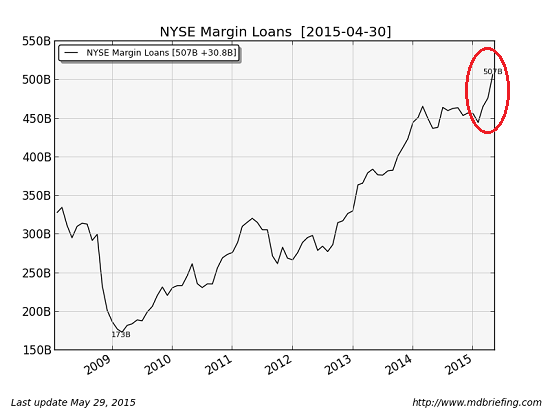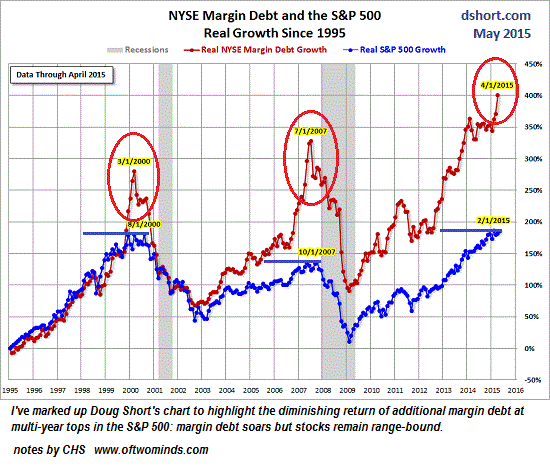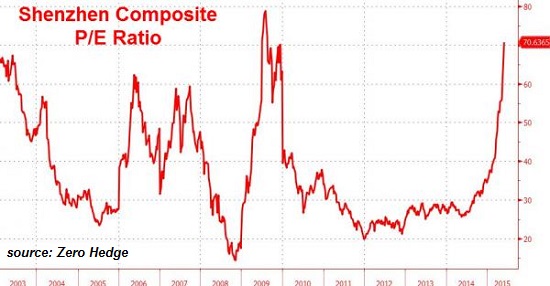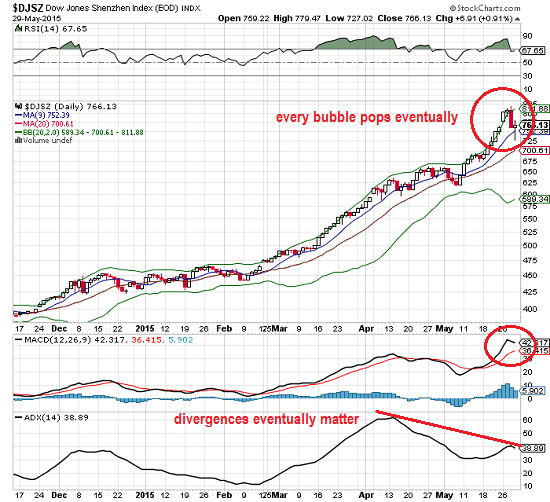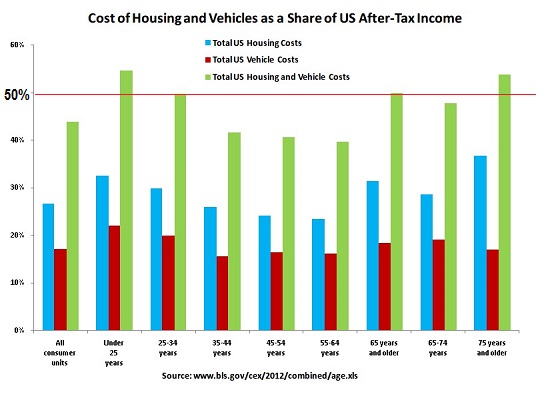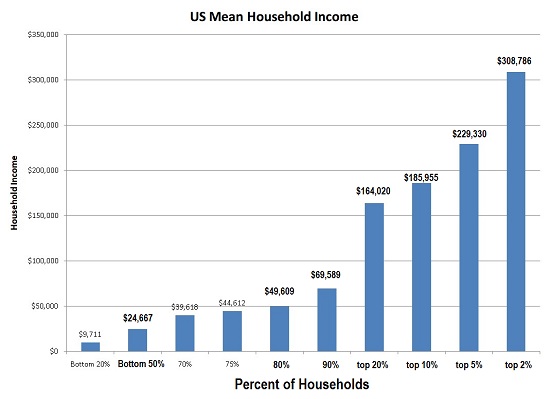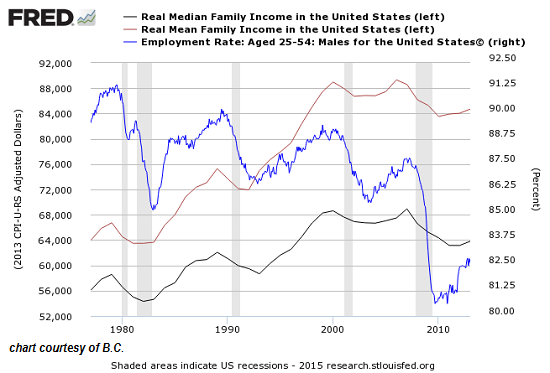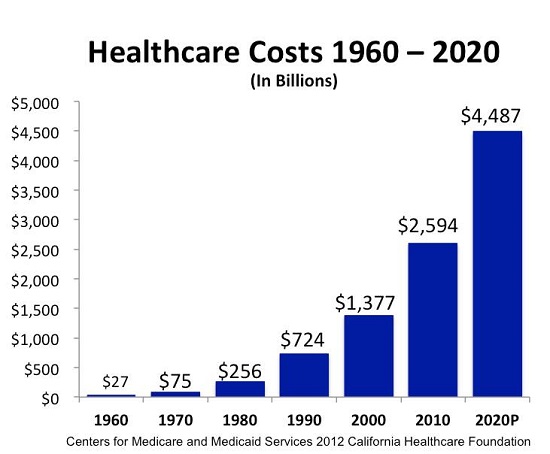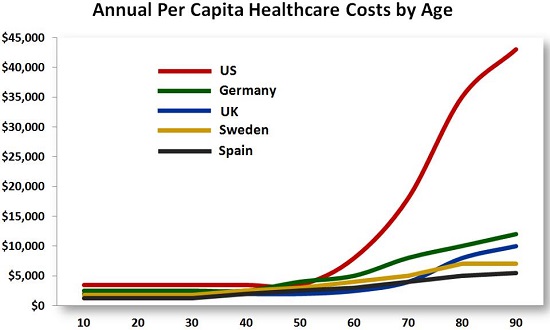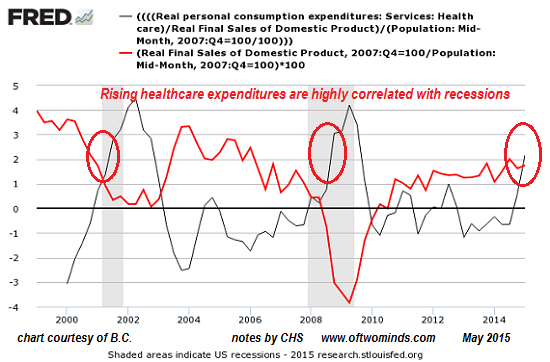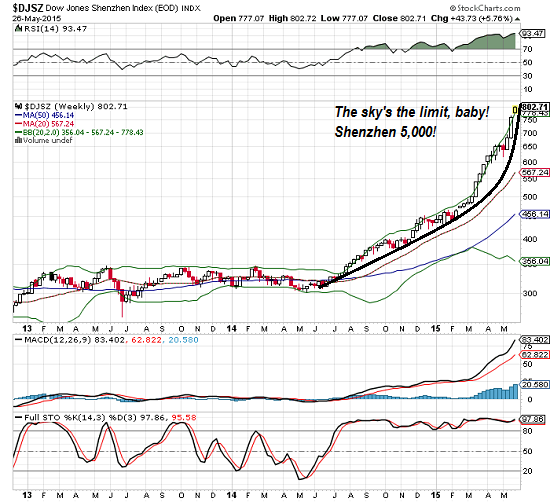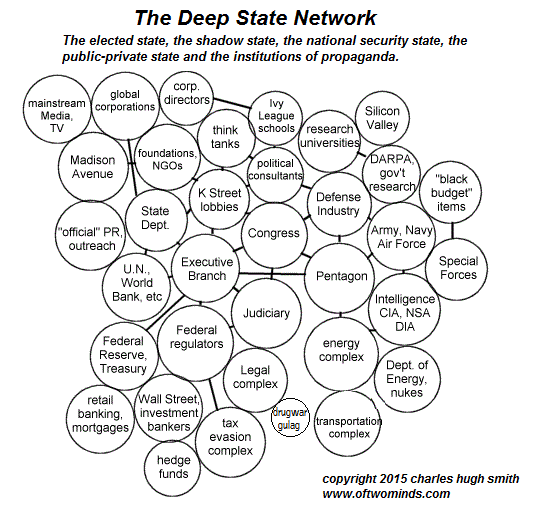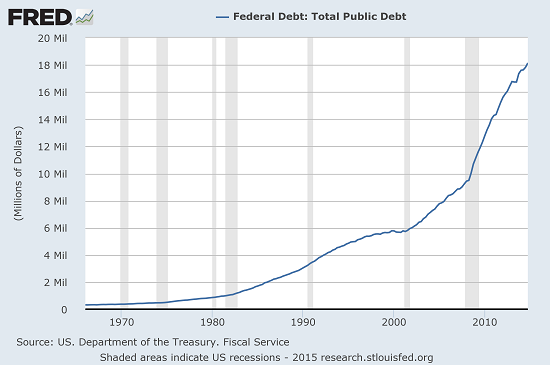The nation is wallowing self-piteously in a fetid trough of denial and adolescent rage/magical thinking now that the nation's bogus, debt-based "prosperity" has crashed and cannot be restored.
If you type Deep State into the custom search window in the right sidebar, the search results fill 10 pages. I think it is fair to say I have long had a deep interest in the Deep State.
The Deep State is generally assumed to be monolithic: of one mind, so to speak, unified in worldview, strategy and goals.
In my view, this is an over-simplification of a constantly shifting battleground of paradigms and power between a number of factions and alliances within the Deep State.Disagreements are not publicized, of course, but they become apparent years or decades after the conflict was resolved, usually by one faction consolidating the Deep State's group-think around their worldview and strategy.
History suggests that this low-intensity conflict within the ruling Elite is generally a healthy characteristic of leadership in good times. As times grow more troubled, however, the unity of the ruling Elite fractures into irreconcilable political disunity, which becomes a proximate cause of the dissolution of the Empire if it continues.
Many consider it "impossible" that Wall Street could possibly lose its political grip on the nation's throat, but I suggest that Wall Street has over-reached, and is now teetering at the top of the S-Curve, i.e. it has reached Peak Wall Street.
Consider what the extremes of Wall Street/Federal Reserve predation, parasitism, avarice and power have done to the nation, and then ask if other factions within the Deep State are blind to the destructive consequences.
Frequent contributor B.C. recently submitted two working papers from the Deep State network that suggested rampant financialization was harming the real economy. This is powerful evidence that the corrosive consequences of financialization on the stability of the real economy is filtering into the group-think hive of the Deep State Network:
Why does financial sector growth crowd out real economic growth? (Bank for International Settlements) After studying how financial development affects aggregate productivity growth, we concluded that the level of financial development is good only up to a point, after which it becomes a drag on growth, and that a fast-growing financial sector is detrimental to aggregate productivity growth.
Here is a sketch of The Deep State Network, which includes not only the nodes of centralized power but of the institutions that feed and support the Deep State's decisions and policies. These include Ivy League and federally funded research universities, the Mainstream Media, think-tanks, NGOs (non-governmental organizations) and the spectrum of institutions that influence the public's ability to frame and contextualize events, i.e. the institutions of propaganda.
A recent interview with Deep State scholar Peter Dale Scott made me wonder if the increasingly repressive policies of the visible state are also being recognized as destabilizing and therefore a threat to the entire American Imperial Project.
Scott's key phrase is surplus repression, which I interpret to mean repression that exceeds the practical needs of the Deep State to maintain public order.
We can anticipate the Deep State fracturing over the question of how much repression is enough: those who believe there is no upper limit on the effectiveness of repression, and those who understand that at some point, unlimited policing and financial repression will unleash a social destabilization that will threaten the integrity of the Empire and the Deep State itself.
Here is an excerpt from the interview:
Peter Phillips: We’re really happy to have you here. I’ve just finished reading your book, The American Deep State: Wall Street, Big Oil, and the Attack on U.S. DemocracyIn your new book you talk about the egalitarian mindset culture of America. We believe in the Constitution, the Bill of Rights, open government, transparency. And then you say also that there’s a dark side, or a deep side inside America that’s repressive, that is looking to be able to detain people without warrants, warrantless wire tapping and all of that – there’s a repressive side. Can you tell us a little bit more about how you frame this understanding of this culture of repression?
Peter Dale Scott: Actually, I think there’s always been a deep state in America and there have been times when it has been very repressive. We’re in a period of, you might say, surplus repression – repression that doesn’t serve anyone’s interests, not even the interests of the ruling class. (emphasis by CHS)
But it’s not in its essence repressive; it’s just repressive when it wants to be. I think a lot of the trouble we’re in now, actually is – and I say this in my book – that in the 1970s the deep state – the bankers, the lawyers, the people in foundations, all kinds of people – were really quite terrified at the forces in America calling for revolution – the African-Americans, but also, equally and perhaps ultimately even more, the anti-war movement because if you had a successful anti-war movement that would mean America would have to get out of the business of war. And that was, I think, an intolerable thought for them.
I think the Deep State was terrified of more than the anti-war movement--it was terrified of the counter-culture, which threatened the entire status quo of mindless consumerism and obedience to authority.
The Counterculture, which included the culmination of the Civil Rights Movement and the birth/expansion of the feminist movement, Eastern spirituality in the U.S., back-to-the-land self-sufficiency, rock music as a cultural force, the nonviolent anti-war movement, the anti-nuclear movement, experimentation with communal living and drugs, Futurist concepts, and a widespread expansion of freedom of self-expression and experimentation. Many observers believe this era also launched a Fourth Awakening as evangelical denominations expanded and "Jesus freaks" found religious inspiration outside mainline churches.
Which changed the world, of course. Those darn hippies!
The nation is wallowing self-piteously in a fetid trough of denial and adolescent rage/magical thinking now that the nation's bogus, debt-based "prosperity" has crashed and cannot be restored, though the visible state (Federal Reserve and elected officials) keep trying to glue Humpty Dumpty back back together again.
The Deep State has been busy powering up the immense machinery of full spectrum repression to contain the inevitable disarray that will follow the collapse of the nation's bogus, debt-based "prosperity."
Our best hope for a productive outcome is that the cadre of those inside the Deep State Network who grasp the self-defeating nature of repression will gain influence over their repression-obsessed peers.
Get a Job, Build a Real Career and Defy a Bewildering Economy(Kindle, $9.95)(print, $20)
 Are you like me? Ever since my first summer job decades ago, I've been chasing financial security. Not win-the-lottery, Bill Gates riches (although it would be nice!), but simply a feeling of financial control. I want my financial worries to if not disappear at least be manageable and comprehensible.
Are you like me? Ever since my first summer job decades ago, I've been chasing financial security. Not win-the-lottery, Bill Gates riches (although it would be nice!), but simply a feeling of financial control. I want my financial worries to if not disappear at least be manageable and comprehensible.
And like most of you, the way I've moved toward my goal has always hinged not just on having a job but a career.
You don't have to be a financial blogger to know that "having a job" and "having a career" do not mean the same thing today as they did when I first started swinging a hammer for a paycheck.
Even the basic concept "getting a job" has changed so radically that jobs--getting and keeping them, and the perceived lack of them--is the number one financial topic among friends, family and for that matter, complete strangers.
So I sat down and wrote this book: Get a Job, Build a Real Career and Defy a Bewildering Economy.
It details everything I've verified about employment and the economy, and lays out an action plan to get you employed.
I am proud of this book. It is the culmination of both my practical work experiences and my financial analysis, and it is a useful, practical, and clarifying read.
Test drive the first section and see for yourself. Kindle, $9.95 print, $20
"I want to thank you for creating your book Get a Job, Build a Real Career and Defy a Bewildering Economy. It is rare to find a person with a mind like yours, who can take a holistic systems view of things without being captured by specific perspectives or agendas. Your contribution to humanity is much appreciated."
Laura Y.
Gordon Long and I discuss The New Nature of Work: Jobs, Occupations & Careers(25 minutes, YouTube)
The Old Models of Work Are Broken
NOTE: Contributions/subscriptions are acknowledged in the order received. Your name and email remain confidential and will not be given to any other individual, company or agency.
| Thank you, Cudick A. ($100), for yet another outrageously generous contribution to this site-- I am greatly honored by your steadfast support and readership. |
|
Read more...
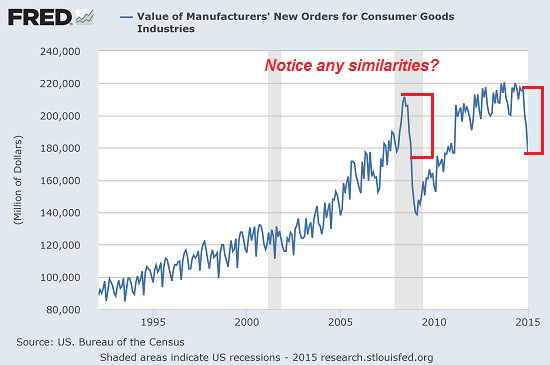
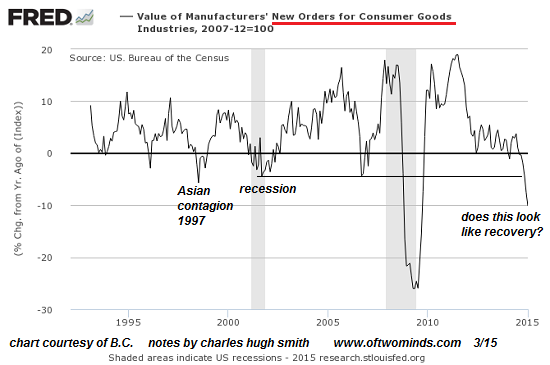
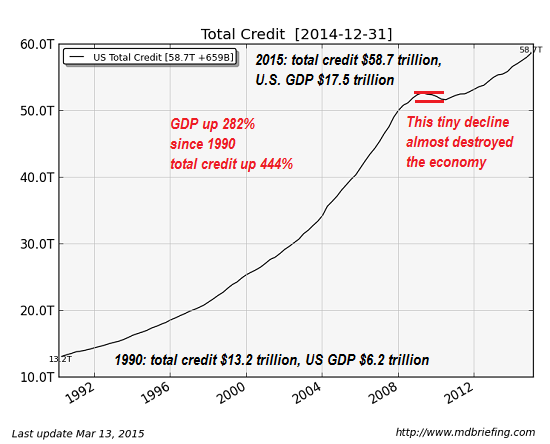
 Are you like me? Ever since my first summer job decades ago, I've been chasing financial security. Not win-the-lottery, Bill Gates riches (although it would be nice!), but simply a feeling of financial control. I want my financial worries to if not disappear at least be manageable and comprehensible.
Are you like me? Ever since my first summer job decades ago, I've been chasing financial security. Not win-the-lottery, Bill Gates riches (although it would be nice!), but simply a feeling of financial control. I want my financial worries to if not disappear at least be manageable and comprehensible. 



















